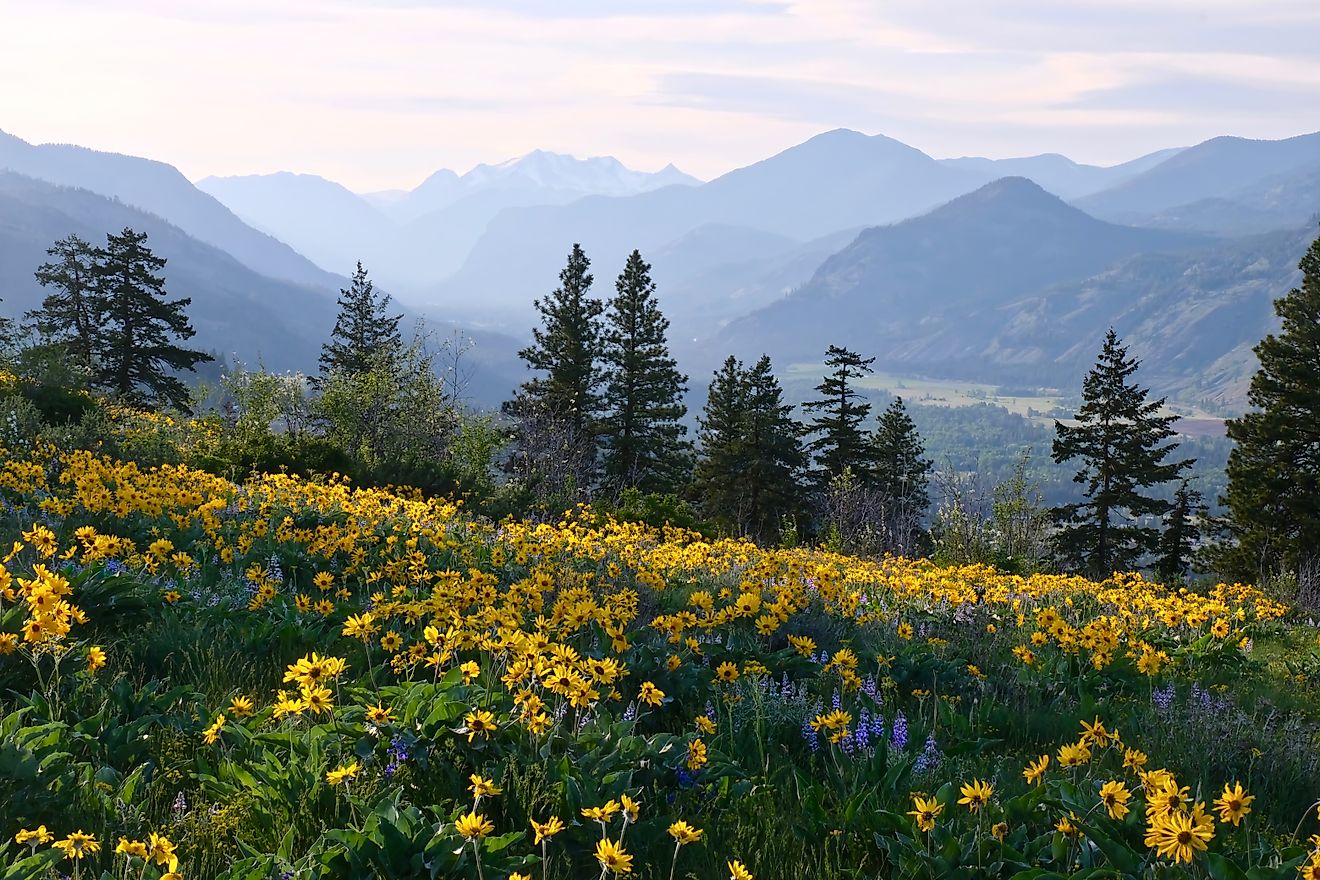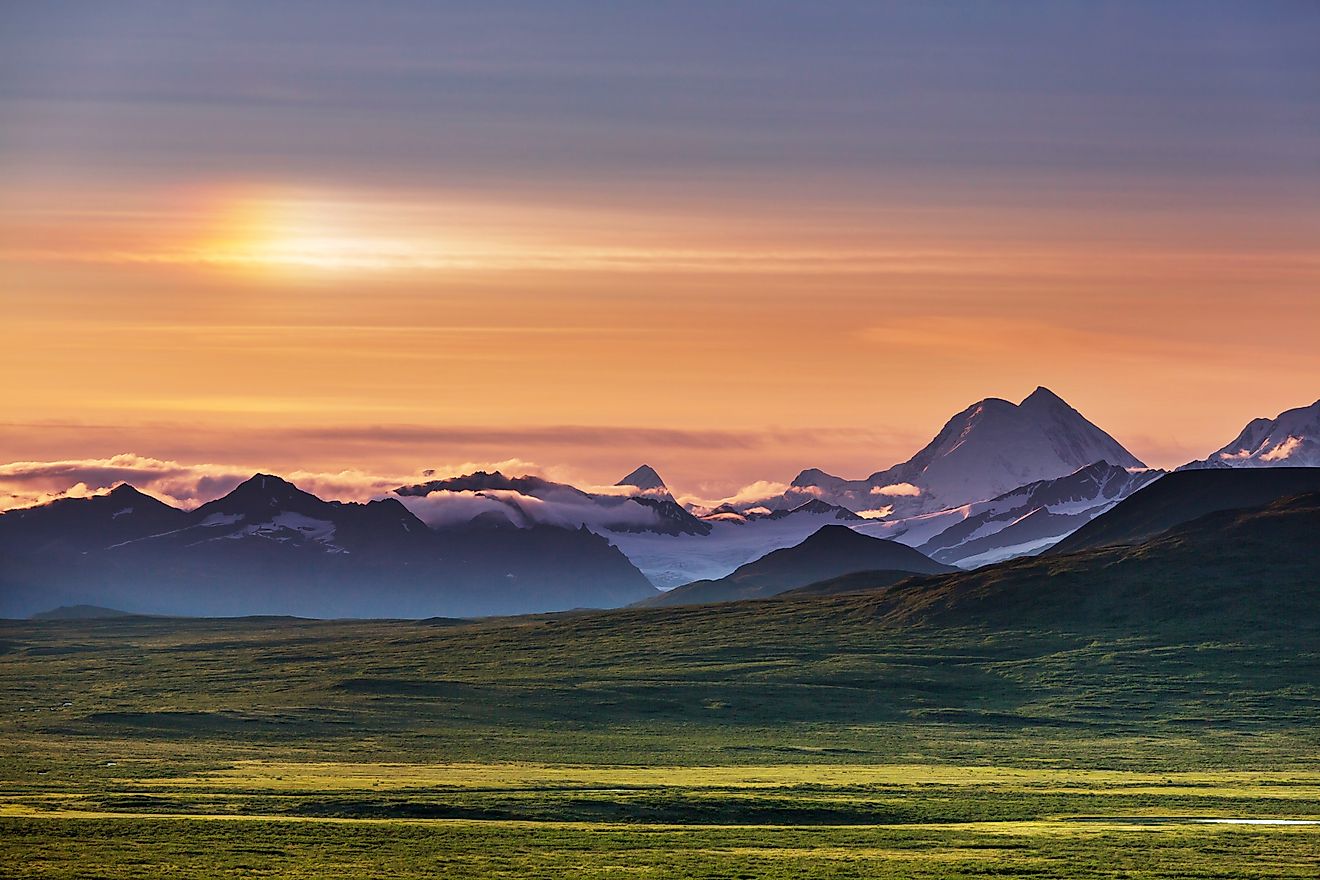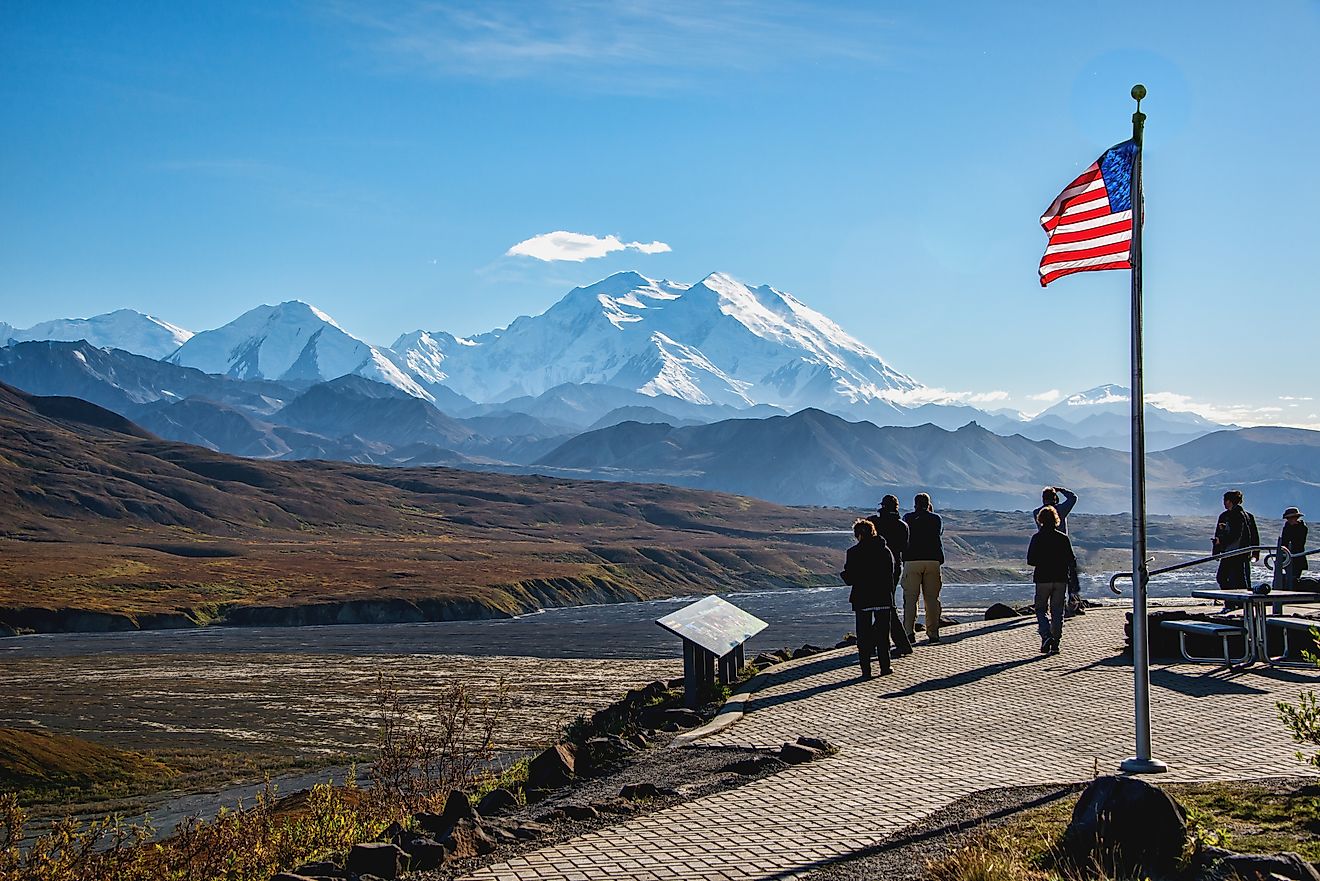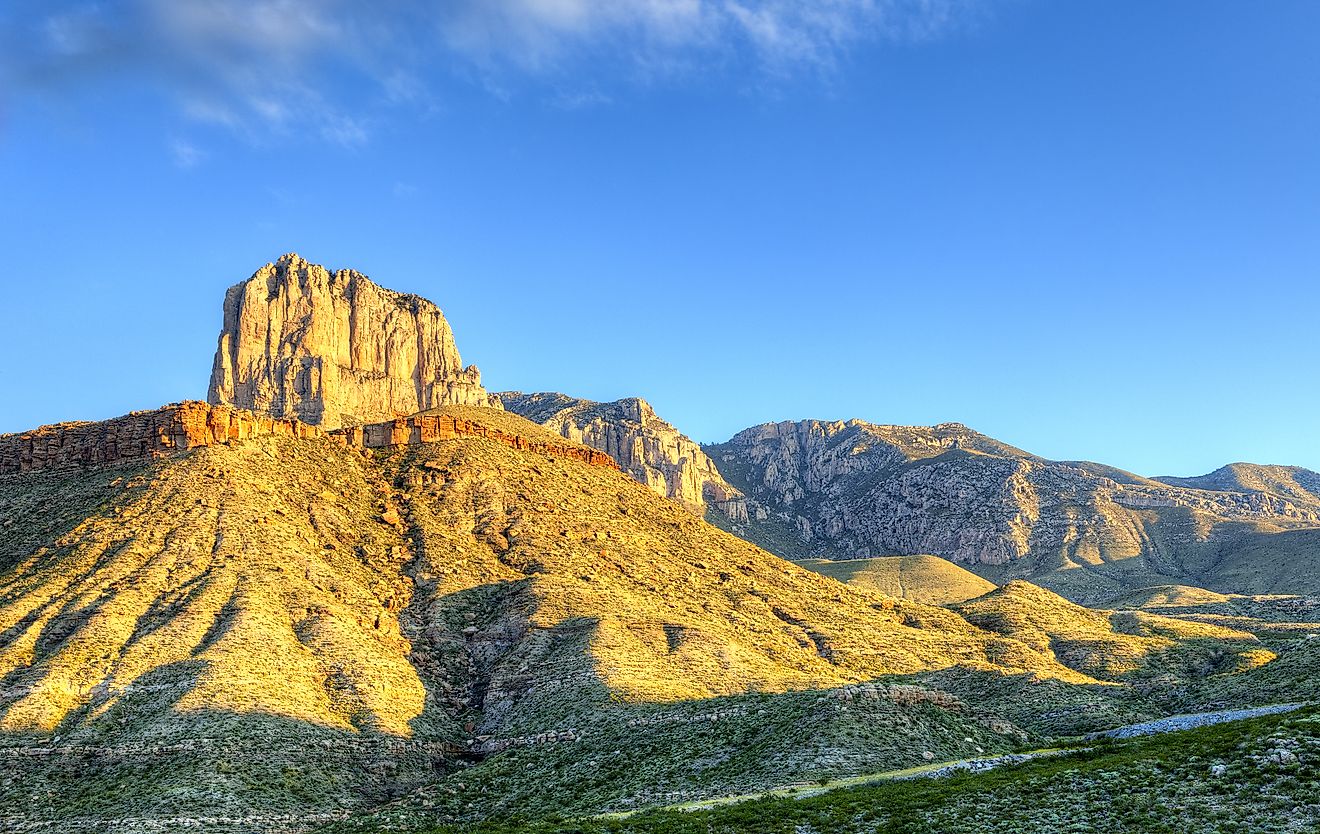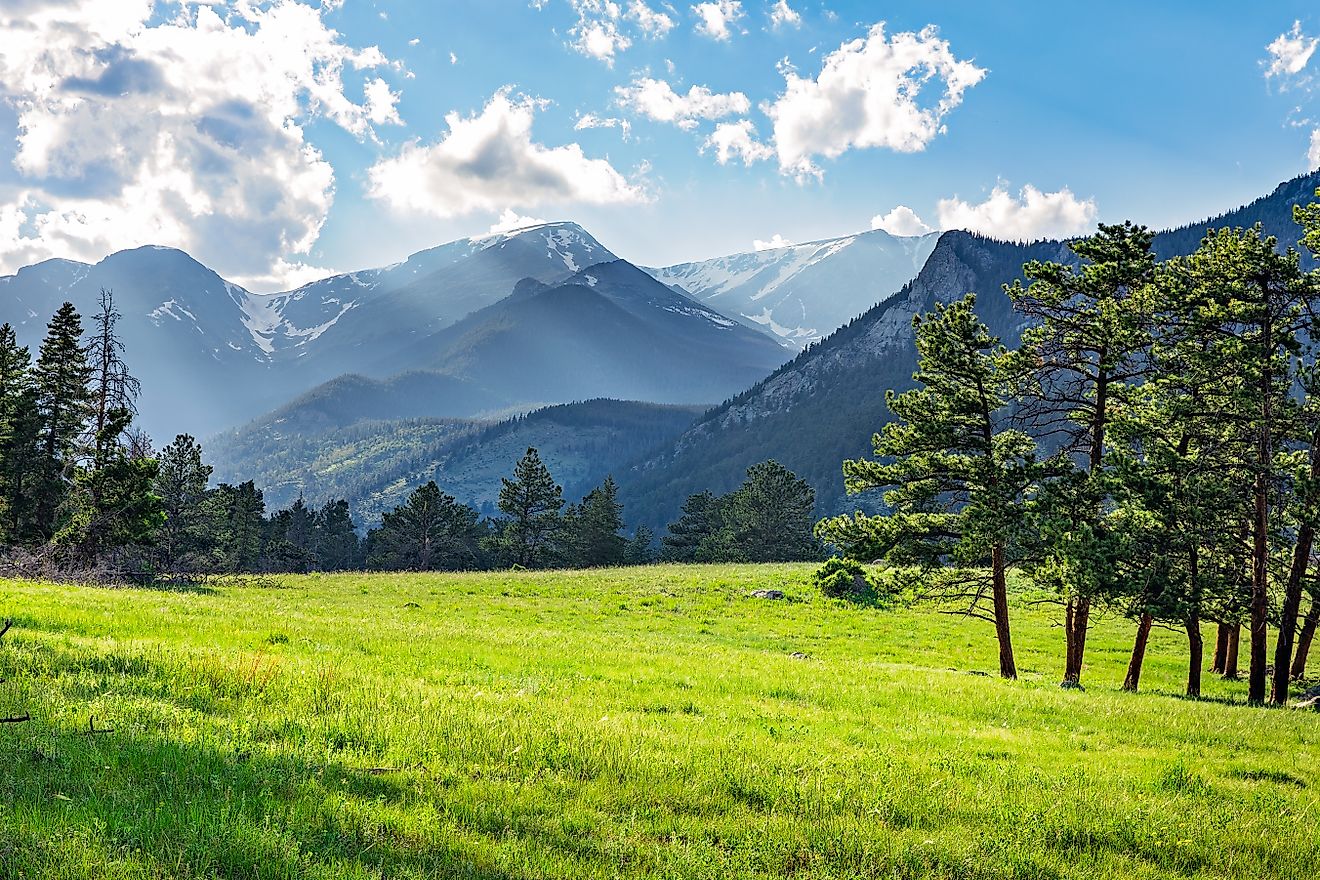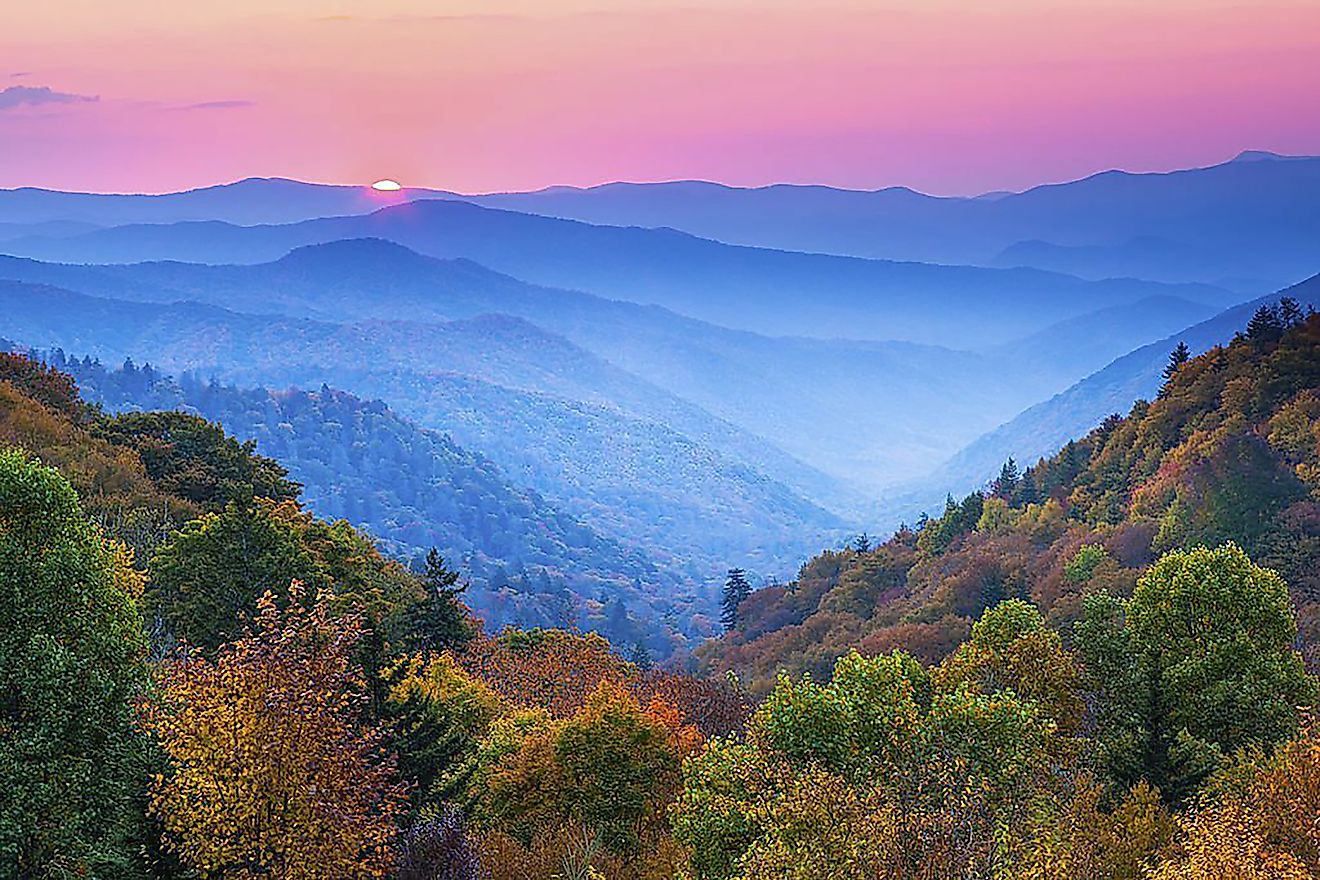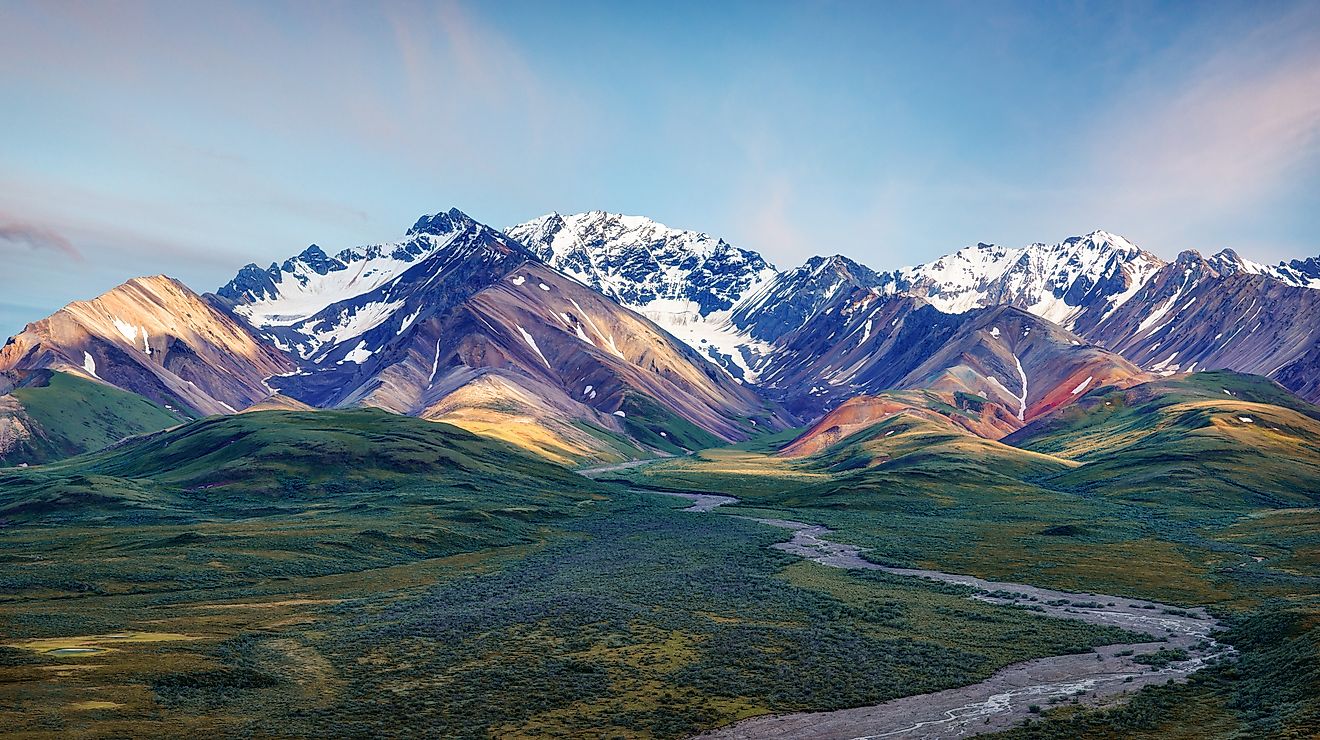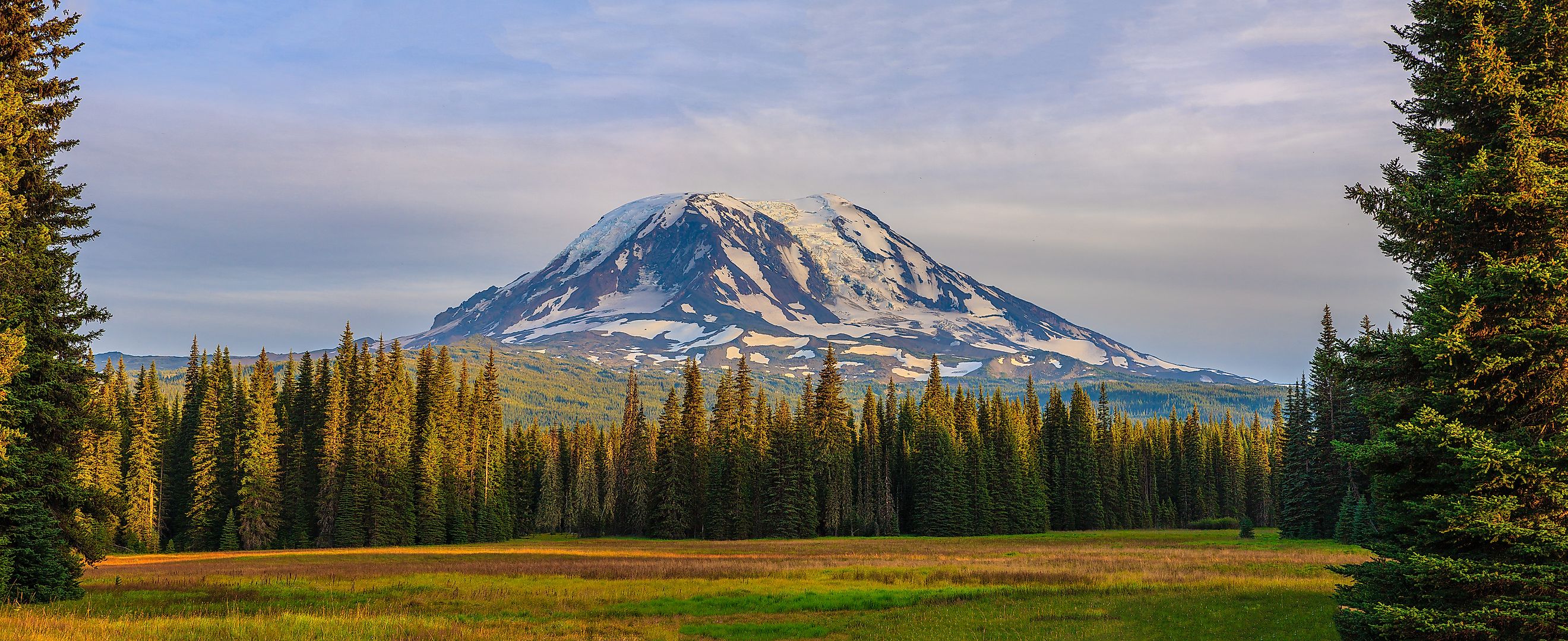
The Only US Mountains Named After Presidents
From icy Alaskan summits to the peaks of the Colorado Rockies, the legacy of US presidents is etched not just in history books and monuments but also into the land itself. Mountains named after presidents reflect more than topography—they tell stories of leadership, legacy, and national pride.
New Hampshire’s Presidential Range is the most concentrated cluster of presidentially named mountains in America. But beyond that famed ridge lies an equally fascinating collection of peaks scattered across the country, each honoring a former commander-in-chief.
Explore notable mountains named after US presidents outside the Presidential Range—and end with a full list that includes all the presidential peaks, coast to coast.
Mount Washington (Washington State)
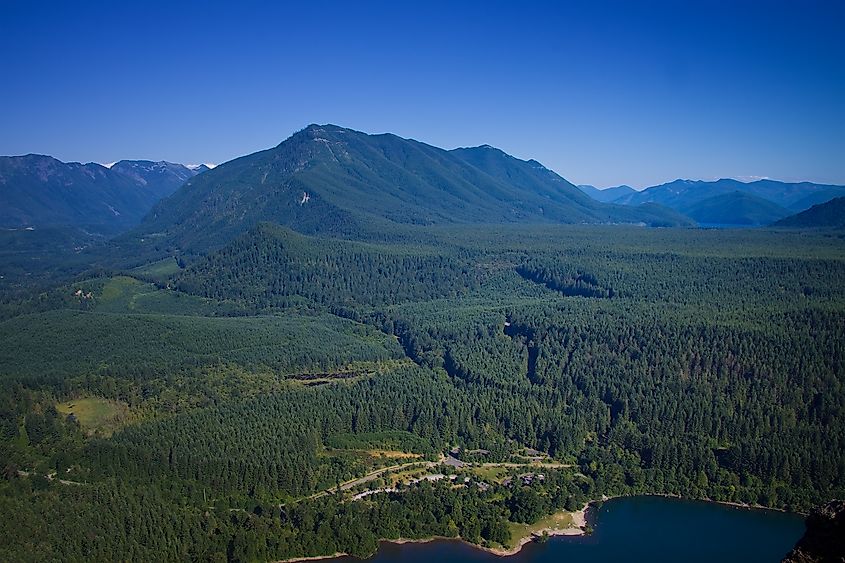
Mount Washington as seen from Rattlesnake Ledge. About four miles South of North Bend, WA. Editorial credit: © Steven Pavlov / https://commons.wikimedia.org/wiki/User:Senapa
Named For: George Washington
Elevation: 6,260 feet
Location: Olympic Mountains, Washington
Most Americans associate Mount Washington with New Hampshire, but there’s another Mount Washington in the Pacific Northwest that also pays tribute to the nation’s first president. Nestled in the Olympic Mountains, this rugged peak is steeped in mystery, with jagged cliffs, dense forests, and sweeping views of Puget Sound.
It’s a fitting namesake for George Washington—a figure who looms large in American memory and whose legacy remains foundational. This lesser-known Mount Washington is popular with experienced hikers and climbers due to its steep ascent and variable weather, reinforcing its status as a challenge worthy of its name.
Mount Adams (Washington)
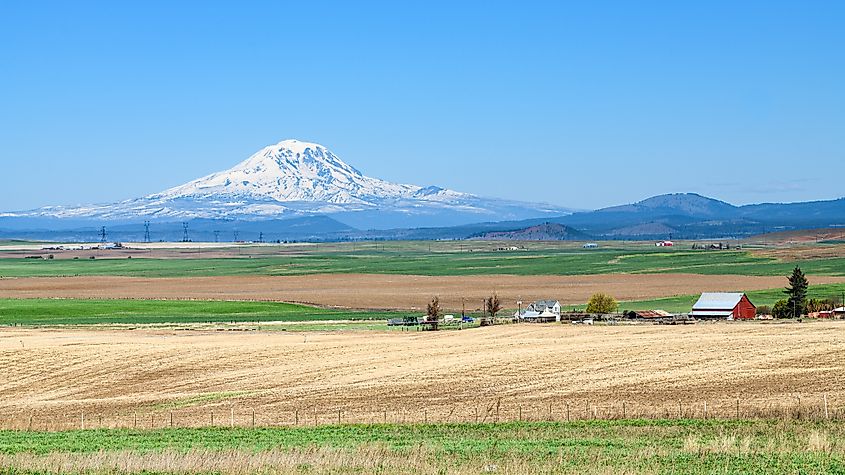
Named For: John Adams
Elevation: 12,281 feet
Location: Cascade Range, Washington
Another towering tribute on the West Coast, Mount Adams honors John Adams, America’s second president and a key Founding Father. As the second-highest peak in Washington State, it’s part of the Cascade Volcanic Arc and is technically considered a dormant stratovolcano.
Although overshadowed by Mount Rainier in popularity and infrastructure, Mount Adams is cherished by backcountry adventurers. Its remote wilderness, glacial fields, and alpine meadows draw those seeking solitude and high-altitude vistas. For skiers and climbers, Adams offers less crowding but just as much grandeur.
Mount Lincoln (Colorado)
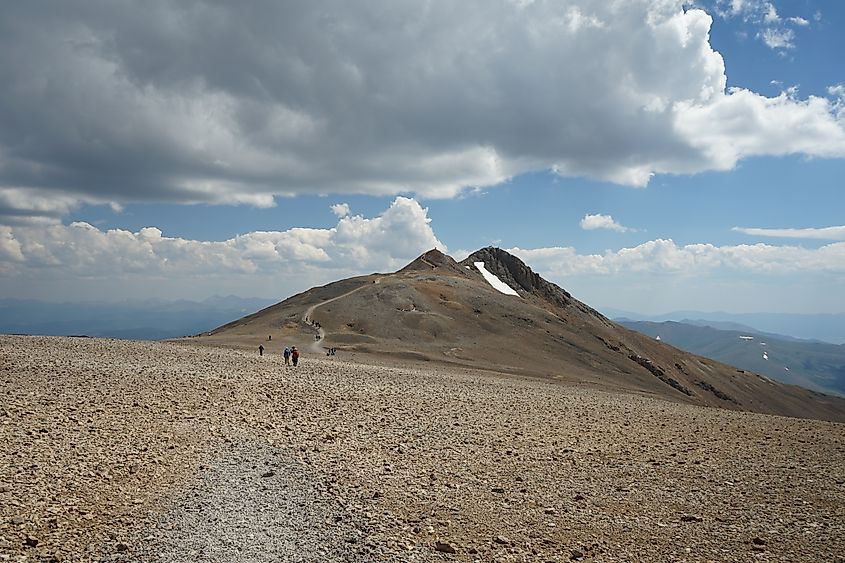
Named For: Abraham Lincoln
Elevation: 14,293 feet
Location: Mosquito Range, Colorado Rockies
One of Colorado’s celebrated “Fourteeners,” Mount Lincoln commemorates the 16th president—Abraham Lincoln, a man widely regarded as one of America’s greatest leaders. Rising more than 14,000 feet, this peak is the highest in Colorado’s Mosquito Range.
It’s a favorite for hikers due to the opportunity to summit multiple peaks in a single loop, including Mount Bross and Mount Democrat. The views stretch for miles across the Rockies, and the alpine environment bursts with wildflowers in summer. Like Lincoln’s presidency, the ascent may be demanding—but the reward is monumental.
Mount Cleveland (Montana)
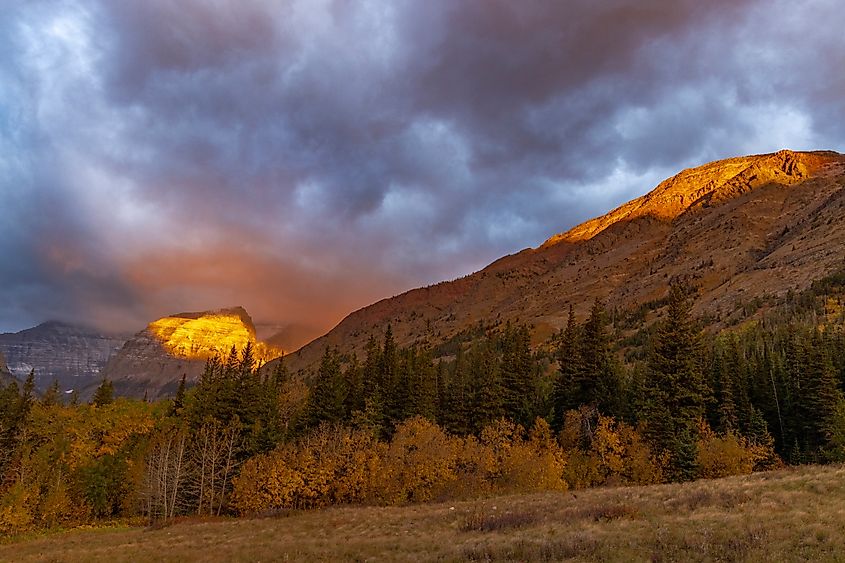
Named For: Grover Cleveland
Elevation: 10,466 feet
Location: Lewis Range, Glacier National Park
Grover Cleveland, the only US president to serve non-consecutive terms, lends his name to the tallest peak in Montana’s Glacier National Park. Mount Cleveland dominates the skyline, rising sharply from the valley floor with little warning.
Its formidable stature and remote location make it one of the most difficult climbs in the park. The peak’s relative inaccessibility suits a president known for charting his own path—often against the political grain.
Mount Grant (Nevada)
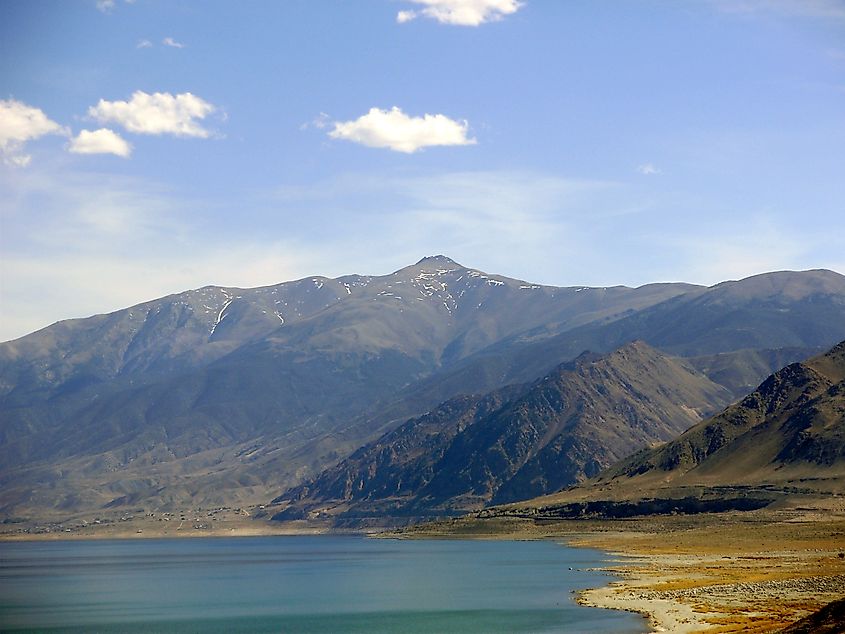
View of Mount Grant, Nevada from the northwest side of Walker Lake. Editorial credit: Famartin via Wikimedia Commons
Named For: Ulysses S. Grant
Elevation: 11,239 feet
Location: Wassuk Range, Nevada
Soaring above Walker Lake in Nevada, Mount Grant pays homage to Ulysses S. Grant—the Civil War general turned 18th president. It’s the tallest point in the Wassuk Range, and much of its terrain is used for military training exercises.
Despite this, a rugged road allows intrepid hikers to approach the summit, which delivers panoramic views of the arid Nevada landscape. The mountain’s exposed ridges and high elevation make it a fitting namesake for a president remembered for leading the nation through conflict and reconstruction.
Mount Roosevelt (South Dakota)
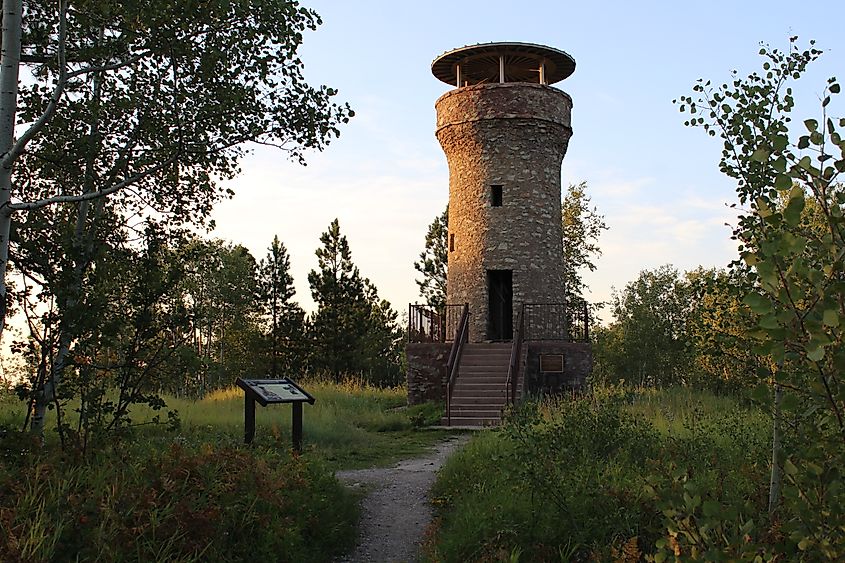
Upon finishing the short hike up to "Friendship Tower" in Mount Roosevelt, you are rewarded with this stunning view of the structure. Editorial credit: Pantunflo via Wikimedia Commons
Named For: Theodore Roosevelt
Elevation: 5,690 feet
Location: Black Hills, South Dakota
Near the historic town of Deadwood, Mount Roosevelt honors Theodore Roosevelt, the conservationist president who helped establish America’s national park system. The peak itself isn’t high by Western standards, but it holds great symbolic value.
Atop Mount Roosevelt sits the Friendship Tower—a stone structure built in 1919 by Seth Bullock, Roosevelt’s close friend and former sheriff. A short trail leads to the summit, offering views of the Black Hills and surrounding prairie. It’s a peaceful place, echoing Roosevelt’s love for wild lands and his belief in preserving them for future generations.
Mount McKinley / Denali (Alaska)

Named For: William McKinley (historically)
Elevation: 20,310 feet
Location: Alaska Range, Alaska
For decades, the tallest mountain in North America was known as Mount McKinley. Named in 1896 by a gold prospector who supported then-presidential candidate William McKinley, the name stuck—despite local objections.
In 2015, the US government restored the mountain’s original Indigenous name, Denali, which means “The High One” in Koyukon Athabaskan. While McKinley’s name is no longer official, it remains a historical footnote to a peak that has drawn climbers and adventurers from around the world. Denali’s staggering height and challenging conditions make it one of the most formidable climbs on Earth.
A Word About New Hampshire’s Presidential Range
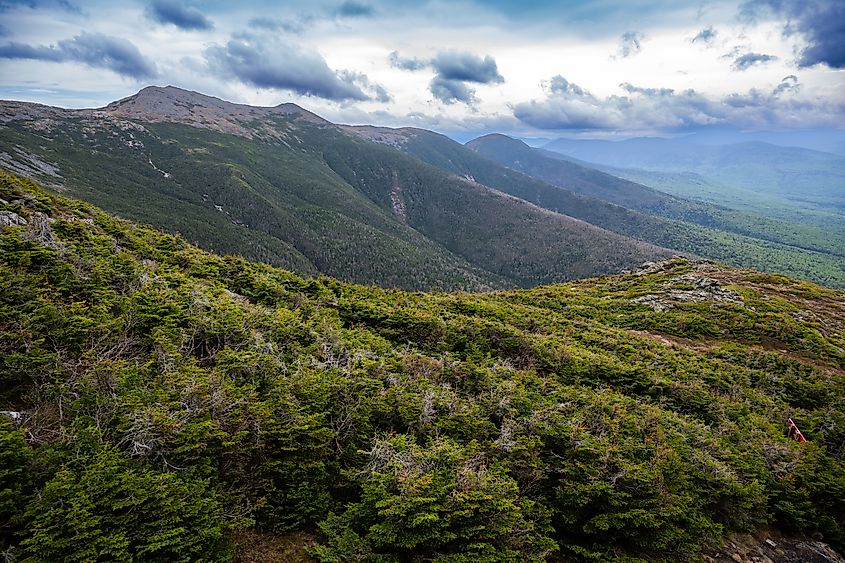
The Presidential Range in New Hampshire’s White Mountains is home to some of the most iconic presidential peaks in America:
-
Mount Washington (6,288 ft)
-
Mount Adams (5,793 ft)
-
Mount Jefferson (5,712 ft)
-
Mount Madison (5,367 ft)
-
Mount Monroe (5,384 ft)
-
Mount Eisenhower (4,780 ft)
-
Mount Jackson (4,052 ft)
These peaks, though all concentrated in one region, attract climbers from across the country due to their steep terrain, harsh weather, and storied namesakes. But, you don’t have to go to New England to hike presidential peaks.
Why Do We Name Mountains After Presidents?
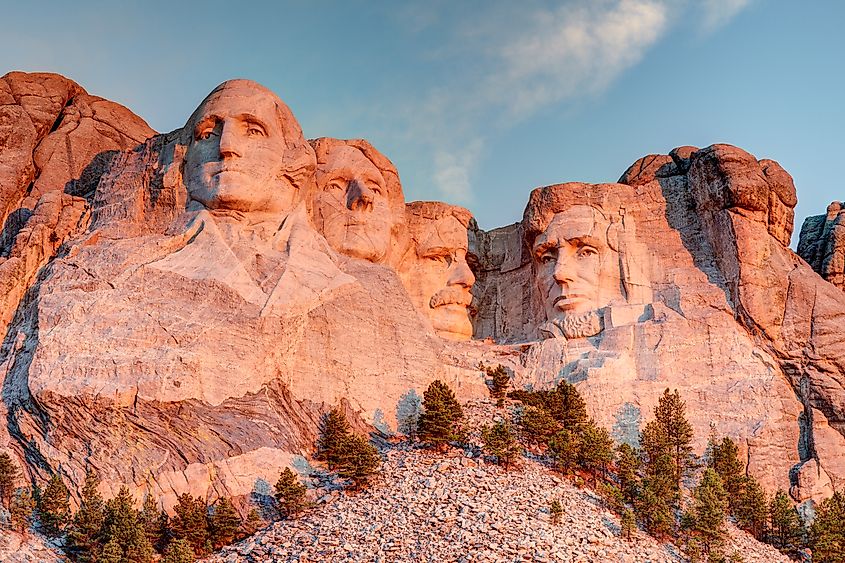
Mountains symbolize power, permanence, and vision—qualities many associate with great leaders. Naming peaks after US presidents serves to:
-
Celebrate leadership and legacy
-
Commemorate historical events
-
Promote patriotism and national identity
Many of these names were bestowed during the westward expansion of the 19th century, as surveyors and settlers sought to leave their mark on the untamed frontier.
Where History and Elevation Meet

Presidential mountains are more than peaks on a map—they’re living landmarks that connect past and present. Each summit stands as a silent tribute to the individuals who have led the nation. From beginner-friendly trails to daunting alpine ascents, there's a presidential mountain for every kind of explorer.
Let your next adventure reach new heights—where history meets the sky.
US Mountains Named After Presidents
| Mountain Name | President Honored | Elevation (ft) | Location | Range |
|---|---|---|---|---|
| Mount Washington | George Washington | 6,288 | New Hampshire | Presidential Range |
| Mount Washington | George Washington | 6,260 | Washington State | Olympic Mountains |
| Mount Adams | John Adams | 5,793 | New Hampshire | Presidential Range |
| Mount Adams | John Adams | 12,281 | Washington State | Cascade Range |
| Mount Jefferson | Thomas Jefferson | 5,712 | New Hampshire | Presidential Range |
| Mount Madison | James Madison | 5,367 | New Hampshire | Presidential Range |
| Mount Monroe | James Monroe | 5,384 | New Hampshire | Presidential Range |
| Mount Jackson | Andrew Jackson | 4,052 | New Hampshire | Presidential Range |
| Mount Eisenhower | Dwight D. Eisenhower | 4,780 | New Hampshire | Presidential Range |
| Mount Lincoln | Abraham Lincoln | 14,293 | Colorado | Mosquito Range |
| Mount Cleveland | Grover Cleveland | 10,466 | Montana | Lewis Range |
| Mount Grant | Ulysses S. Grant | 11,239 | Nevada | Wassuk Range |
| Mount Roosevelt | Theodore Roosevelt | 5,690 | South Dakota | Black Hills |
| Mount McKinley/Denali | William McKinley | 20,310 | Alaska | Alaska Range |
Q&A Section
How many mountains in the US are named after presidents?
At least 15 notable mountains across the country are named for US presidents, including several outside the well-known Presidential Range.
Are these mountains difficult to access?
It varies. Some, like Mount Roosevelt, are accessible by a short hike, while others, like Denali or Mount Van Buren, require serious expedition skills.
Why was Mount McKinley renamed Denali?
In 2015, the federal government restored the mountain’s Indigenous name, Denali, acknowledging its original Koyukon Athabaskan heritage.
Which presidential mountain is the tallest?
Denali (formerly Mount McKinley) in Alaska is the tallest in North America at 20,310 feet.
Can I hike these mountains year-round?
Not all. Many presidential peaks are subject to seasonal weather conditions and are only safe to climb during certain months.
